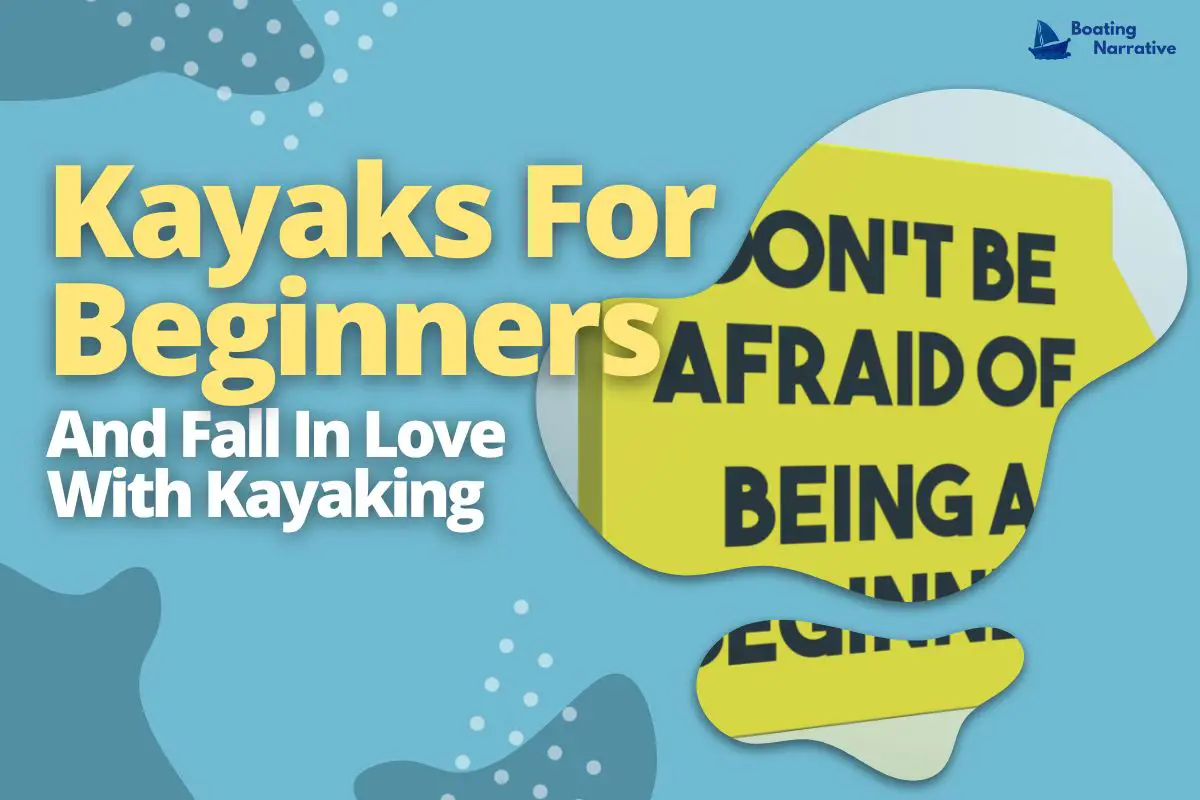If you’re new to kayaking, the number of different kayaks on the market can be overwhelming. How do you know which one is right for you?
There are many things to consider when purchasing your first kayak. You’ll want to think about where you’ll be paddling most often, what kind of activities you’ll be using your kayak for, and what features are most important to you. With so many options on the market, it’s easy to get overwhelmed. But don’t worry, I’m here to help!
In this blog post, I’ll give you some things to consider when choosing a kayak as a beginner and my top pick for the best kayak for beginners.
Key Takeaways
- Kayaks are a great way to get out on the water and enjoy nature.
- However, before you purchase a kayak, it is important to consider what type of kayaking you will be doing and what kind of kayak would best suit your needs.
- There are many different types of kayaks available on the market, so it is important to do your research before making a purchase.
- When selecting a kayak, you should take into account things like size, weight, durability, and cost.
- After taking into account each of these elements, you will be able to select the kayak that best suits your requirements.
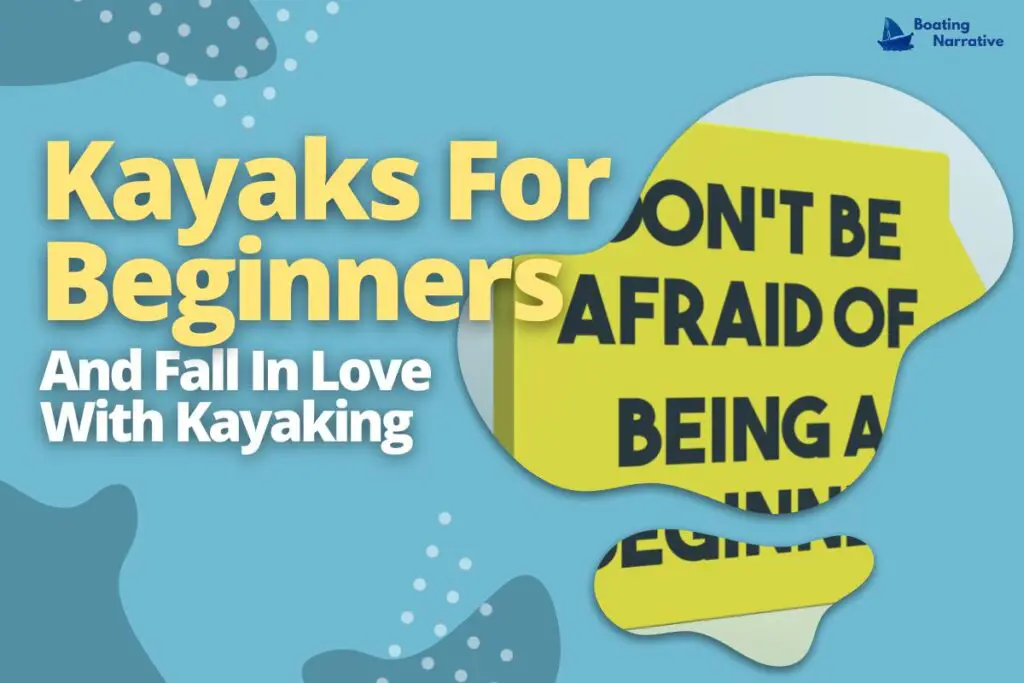
Here’s The Answer To What Is The Best Kayak For Beginners.
As a beginner, it is essential to choose a kayak that is stable, comfortable, and easy to maneuver. Choosing the best kayak for you might be challenging given the wide variety of models available.
There are three primary types of kayaks: sit-on-top (SOT), sit-inside (SI), and inflatable. Sit-on-top kayaks are stable and easy to get in and out of. They are also great for fishing or paddling in warm weather because your legs are not enclosed in the cockpit.
Sit-inside kayaks are more weatherproof but can be more challenging to get in and out of. Inflatable kayaks are lightweight and portable but may not be as durable as other types of kayaks.
It’s critical to take your budget, intended use, and desired features into account when selecting a kayak. Kayaks range in price from around $200 to $2000 or more. Beginner kayakers should choose a reasonably priced kayak that is designed for their intended use.
When selecting a novice kayak, keep the following in mind as well:
- Stability: A stable kayak is less likely to tip over.
- Weight capacity: Make sure the weight capacity of the kayak can accommodate you and any gear you plan on bringing along.
- Length: A shorter kayak is easier to maneuver than a longer one.
It Should Be Stable And Easy To Paddle.
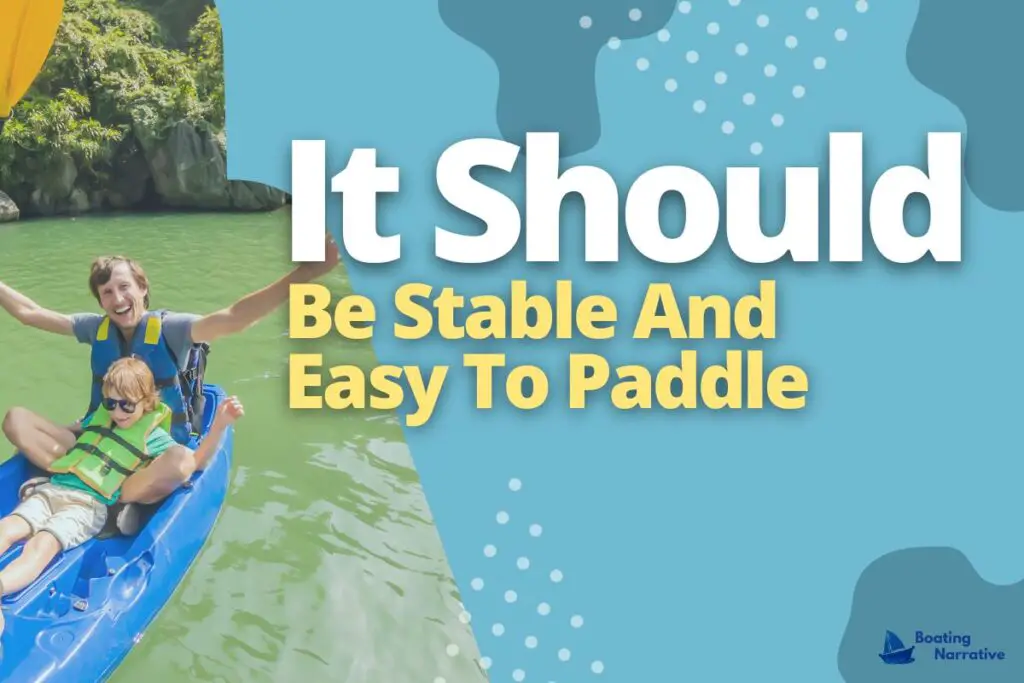
A kayak is a boat that can be used by one person or two people. It should be stable and easy to paddle, but not too stable. This means it will float on water and carry you along effortlessly when you push forward with your feet.
Kayaks are more comfortable than canoes, which makes them ideal for beginners who want to get their feet wet without getting wet themselves!
It Should Be Light Enough So That You Can Carry It Around Easily.
- Carrying a kayak on your back is the most common way, but you can also carry it in a backpack or shoulder bag. When carrying it on your back, place the PFD (personal flotation device) in front of your torso and sit down so that it’s between your legs. This will help keep everything balanced and prevent any injuries from happening if something goes wrong while out enjoying the water!
- How do I load my kayak onto my car? Once you’ve got everything ready for departure from the dock area, simply put one end of the boat into its storage compartment first before closing off its lid with latches located at each corner—once done, all four latches close together tightly around their respective sides, attach securely together using screws.
Adjustable Seating Positions Enable You To Find The Right Position For You.
Adjustable seating positions ensure that you can find the right position for you. You may want to adjust your seat for different activities, such as kayaking in flat water or surfing on a wave.
You may also want to adjust it based on your body type, height, and size. Additionally, if someone else is using the kayak with you (such as your child), they might need an adjustment as well!
A Seat Belt Helps Prevent Injuries.
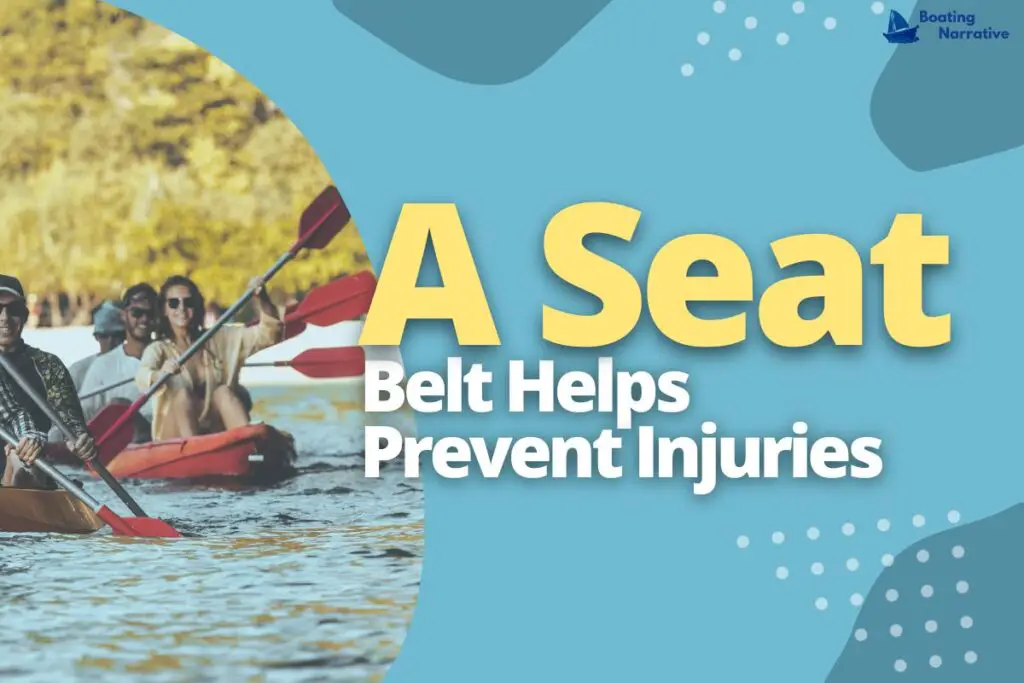
A seat belt is a great way to protect yourself from injury. It helps prevent you from falling out of the kayak, which can cause serious head injuries if you land on your head while kayaking.
A seat belt also prevents you from hitting your head on the boat, which would be incredibly painful and may result in a concussion. Finally, it helps keep you in the kayak—you don’t want to be thrown off!
The Materials Used In Making The Boat Should Last A Long Time.
The materials used in making the boat should last a long time. This is important because if you want to enjoy kayaking for a long time, then it’s better to buy a boat that will serve your needs even after years.
It would be best if your boat was made from environmentally friendly materials. This can help reduce carbon emissions from manufacturing and transportation, which means less damage to our planet!
Your next concern should be its weight or portability factor; this will determine how easily you can carry it around everywhere you go (or who knows-maybe even drag yourself across town).
Different Types Of Kayaks And Their Characteristics
Kayaks come in a variety of designs, including the following:
- Canoe: A canoe has a flat bottom and sides that wrap around like an umbrella. They’re great for beginners because they’re light and easy to transport. You can also use them in rivers or lakes where you’ll have access to water, but not necessarily waves or rapids.
- A Kayak: A kayak is similar to a canoe, except it has more storage space underneath its decking than on top of it (as shown here). This means that if you want your gear accessible while paddling downriver or out on open water, this type of boat might be better suited for you!
Other types include tandem kayaks (where one person sits behind another), sit-on-top models (where people sit directly above their feet instead), and touring models, which hold up against windy conditions well enough but aren’t very stable due
Size
You should think about your kayak’s length and width before selecting one. The bigger the boat is, the more likely it can support heavier weights and people.
You also want a kayak that has enough space for your legs and feet so they don’t get cramped up while paddling around in it.
The weight capacity of a kayak refers to its maximum weight before any damage occurs, as well as whether each model has any safety mechanisms that prevent overexertion from happening (e.g., padding).
Always purchase a size larger than what would comfortably fit in your closet if you had enough room for both.
Comfort
Comfort is important because you’ll be sitting in it for a long time. Your seat should be supportive, with an adjustable backrest and footrests that let you change the seat’s height to achieve the ideal position for your body.
It’s also important to make sure that your kayak has plenty of padding for comfort during long trips on water or when paddling around at high speeds.
If possible, try putting some weight into each end as well—you’ll feel more stable if they’re heavier than they seem like they’d be otherwise!
Control
Control is the first quality to consider when buying a kayak.
- It should be easy to turn.
- It should be easy to paddle, especially if you’re just learning how to kayak or if you’re older than twelve years old.
- You want the boat’s handling characteristics (how it handles) to match your own style of paddling and getting into the water.
Ease of Use
- Ease of transport.
- Ease of storage.
- Ease of repair, maintenance, and customization if needed (for example, replacing the seat).
- The kayak is easy to maneuver through different terrain, weather conditions, and water depths without needing additional training or practice time before you can use it safely on your own (you may need some instruction, but that’s normal).
Capacity
The amount of weight a kayak can support is called its capacity. It’s important to know how much weight you want to carry on your next trip, as well as how many people are going with you.
You may also need to factor in days spent on the water and whether or not there will be other boats or swimmers around when you use this type of vessel.
What To Look For When Purchasing A Kayak As A Beginner
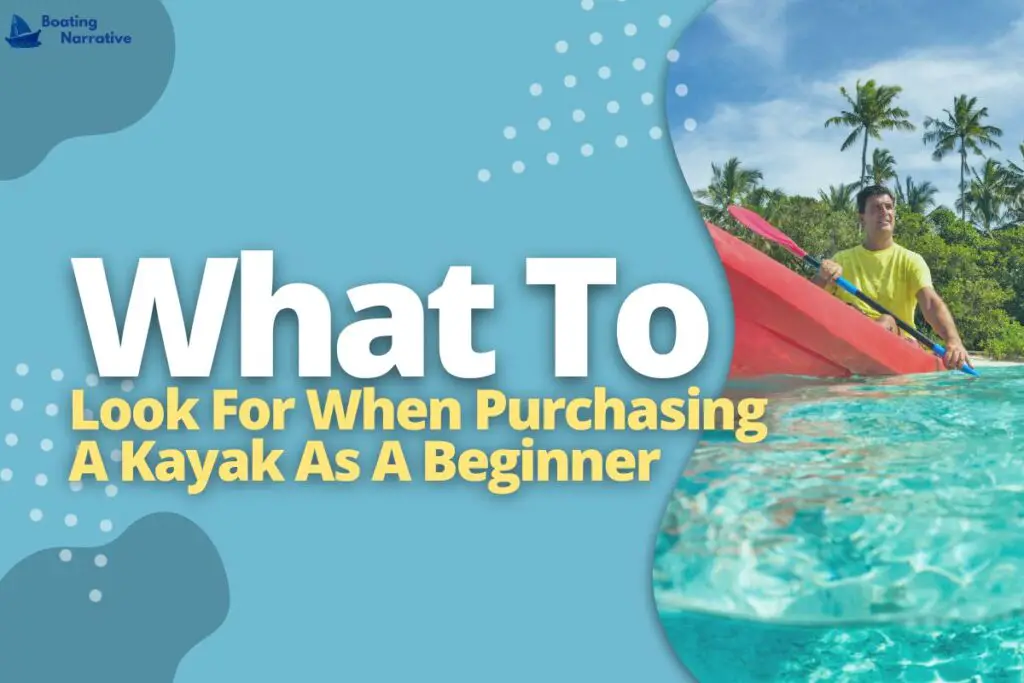
So, you’re ready to take your first step into kayaking. You know that there are many different types of boats available, but which one should you get?
When choosing a kayak, there are a number of factors to take into account, including stability, weight, and portability. A stable boat will allow beginners to learn how to paddle in calm conditions while being able to maneuver around obstacles easily.
A lightweight boat will make it easier for beginners who might be carrying their vessel through waterfalls or down slopes while still being able to carry them around town after class finishes at night.
Finally, an adjustable seating position can help make sure that each person finds the right fit for their body type and personal needs.
The Best Kayak For Beginners Based On Different Criteria
There are many factors to consider when choosing the right kayak for beginners. There are four main categories to consider: size, price, durability, and capability.
Of course, there are other considerations, such as comfort and safety. When picking a boat, keep all of these points in mind. If you’ve never kayaked before, you might want to start out with a smaller kayak until you get more experience.
Size Matters Most
Smaller boats are easier to learn how to paddle, maneuver, and control. They also provide less resistance during paddling. A small boat will allow you to focus on learning proper technique and form while still being able to move around easily.
Price Doesn’t Matter if It’s Too Expensive
You’ll get what you pay for. With that said, some cheaper models won’t last very long or perform nearly as well as those made by reputable manufacturers.
Durability Does Not Equal Price.
If you plan to spend hours out on the water, then you need a durable kayak. Good quality boats should hold up over time. Some cheap boats will fall apart after just one use.
Capability Matters Most
A good kayak must be capable enough to carry you safely while providing adequate support and stability. Seek out reviews from people who own kayaks of the same model. Compare these reviews against the features listed above.
Conclusion
In general, the best kayaks for beginners are going to be shorter and have a wider beam (the distance from one side of the kayak to the other). These characteristics make the kayak more stable and easier to handle.
Other features to look for in a beginner’s kayak include plenty of storage space and an adjustable seat. You might also want to consider a sit-on-top kayak, which is easier to get in and out of than a traditional kayak.
It’s crucial to explore your selections carefully before making a purchase because there are many excellent ones available. Once you’ve decided on the perfect beginner kayak for you, be sure to check out our article on how to store your kayak so it stays in good condition.
If you enjoyed this article, be sure to check out our website for more great content like this! We update our articles regularly, so be sure to stay tuned for more helpful tips and information.
And don’t forget to follow us on social media for even more great content.

